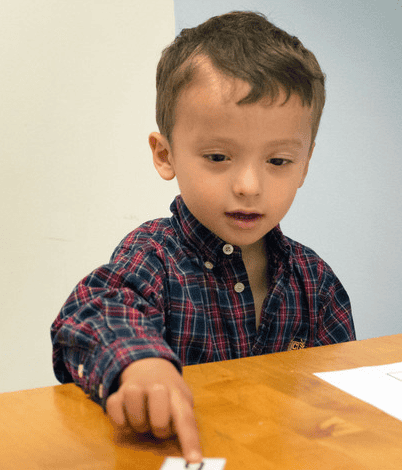Supporting Students with Dyslexia: Accommodations and Modifications in Schools

|
Getting your Trinity Audio player ready...
|
Introduction
Dyslexia is a learning difficulty characterized by challenges in decoding (breaking down words into their individual sounds) and automatically recognizing words. These difficulties can significantly impact a student’s ability to read fluently and comprehend text.
Accommodations and Modifications for Students with Dyslexia
To support students with dyslexia in schools, it’s essential to provide accommodations and modifications that address their specific needs. These supports help level the playing field so students with reading challenges have a fair opportunity to perform on par with students who do not have reading challenges.
Accommodation: Adjustments made to the learning environment, instructional methods, or assessment procedures to support students with dyslexia without fundamentally changing the content or standards.
Modification: Altering the content, curriculum, or expectations to better suit the needs of students with dyslexia.

Below is a table with 20 modifications and accommodations to support students with dyslexia in schools:
| Accommodation/Modification | Reason |
|---|---|
| Use of multisensory instruction | This approach engages multiple senses (visual, auditory, tactile) simultaneously, making it easier for students with dyslexia to learn and retain information. |
| Extended time for assignments and tests | Dyslexia can slow down reading and processing speed, so providing extra time ensures that students have sufficient opportunity to complete tasks without feeling rushed. |
| Preferential seating near the teacher | Sitting closer to the teacher reduces distractions and allows students to receive additional support and guidance as needed. |
| Access to audiobooks and text-to-speech technology | Audiobooks and text-to-speech technology provide alternative ways for students to access written content, bypassing their difficulties with decoding and allowing them to engage with materials more effectively. |
| Use of assistive technology tools | Tools such as speech-to-text software, word prediction programs, and electronic spell-checkers can help students overcome spelling and writing challenges, enabling them to express their ideas without being hindered by dyslexia-related difficulties. |
| Break tasks into smaller, manageable steps | Breaking down assignments or tasks into smaller steps helps students with dyslexia to stay organized, manage their workload effectively, and experience success as they work through each component individually. |
| Provide frequent breaks during instruction and activities | Regular breaks help prevent mental fatigue and allow students to recharge, maintaining their focus and productivity throughout the day. |
| Encourage the use of graphic organizers and visual aids | Visual tools like graphic organizers, charts, and diagrams can enhance comprehension by providing structure and visual cues to help students organize information and make connections between concepts. |
| Offer alternative forms of assessment | Allowing students to demonstrate their understanding through methods such as oral presentations, projects, or visual displays provides opportunities for them to showcase their knowledge and skills in ways that align with their strengths. |
| Scaffolded instruction and guided practice | Providing step-by-step guidance and support during instruction and practice activities helps students with dyslexia develop their skills in increments, building confidence and competence over time. |
| Explicit instruction in phonics and word recognition skills (modification) | Direct instruction in phonics (the relationship between letters and sounds) and word recognition strategies helps students improve their decoding abilities and become more proficient readers. |
| Encourage active participation and engagement | Creating a supportive and inclusive classroom environment where students feel encouraged to participate actively fosters their motivation and interest in learning, leading to better outcomes despite their dyslexia-related challenges. |
| Utilize peer tutoring and cooperative learning activities | Peer tutoring and cooperative learning provide opportunities for students to collaborate, share ideas, and support one another’s learning, promoting social interaction and academic growth in a collaborative setting. |
| Flexible grouping arrangements | Flexible grouping allows for dynamic adjustments based on students’ needs and abilities, ensuring that students with dyslexia have opportunities to work with peers who can provide support and encouragement as they learn and grow together. |
| Provide clear and concise instructions | Clear and concise instructions minimize confusion and ambiguity, making it easier for students with dyslexia to understand tasks and expectations, and reducing the likelihood of misunderstandings or errors. |
| Allow for verbal responses in addition to written ones | Offering students the option to respond verbally rather than in writing accommodates their difficulties with spelling, allowing them to demonstrate their understanding and contribute to class discussions more comfortably. |
| Highlight key information and provide visual cues | Emphasizing important information and using visual cues (e.g., highlighting, underlining, bullet points) helps students focus their attention and identify key concepts, supporting their comprehension and retention of essential content. |
| Provide opportunities for repeated practice and review | Repetition and review are essential for reinforcing learning and strengthening new skills. Offering opportunities for students to practice and review material multiple times promotes mastery and retention, especially for students with dyslexia. |
| Foster a growth mindset and celebrate progress | Encouraging a growth mindset mindset fosters resilience and perseverance, empowering students to view challenges as opportunities for growth and learning. Celebrating their progress and achievements reinforces their confidence and self-esteem. |
| Collaborate with parents and other support professionals | Establishing open communication and collaboration with parents, as well as coordinating with support professionals (e.g., special education teacher, school psychologist) ensures a holistic approach to supporting students with dyslexia both in school and at home. |
These accommodations and modifications are designed to create an inclusive learning environment where students with dyslexia can thrive academically and reach their full potential. By implementing these strategies, educators can support students with dyslexia in overcoming challenges and achieving success in their academic pursuits.
You Also Might Like: Phonics Game for Kids by Torlam on Amazon
References:
- Read, Leag J. (2021, May-Jun). Explicit Instruction as the Essential Tool for Executing the Science of Reading. Sharon Vaughn and Jack Fletcher. Read Leag J, 2(2), 4–11.
- Cushen White, N. (n.d.). Road to Success for Students with Dyslexia: Intervention and Accommodations—with Appropriate Intensity and Duration. International Dyslexia Association (IDA). Retrieved from dyslexiaida.org/accommodations-for-students-with-dyslexia.






